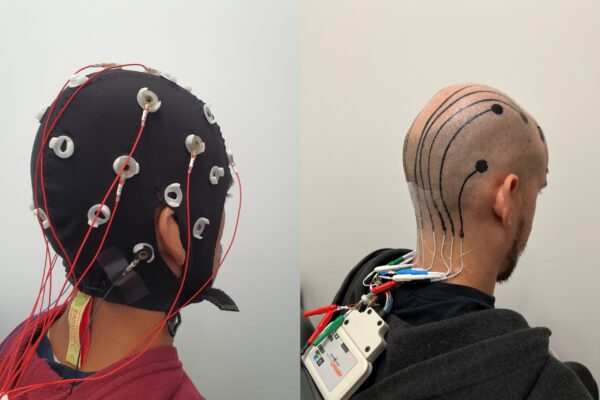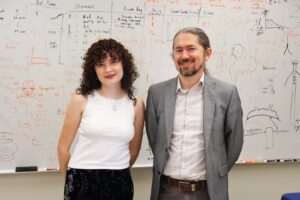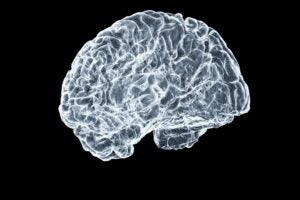AUSTIN, Texas — Since the emergence of temporary, skin-attached electronic tattoos more than a decade ago — and their evolution to measure heart activity, track pneumonia, measure stress levels, and more — researchers have grappled with a major logistical challenge: How can they be applied to hairy skin without losing performance?
To figure out this challenge, researchers from The University of Texas at Austin and University of California, Los Angeles, borrowed from regular tattoos. The researchers developed a conductive ink that can be printed directly on the surface of a patient’s head and measure their brainwaves.
These e-tattoos serve as the sensors for electroencephalography (EEG), a medical test that measures the brain’s electrical activity. EEG can help diagnose and monitor brain tumors, sleep disorders and other brain issues.
“The holy grail for EEG is a sensor that patients can wear for long periods of time, outside the clinical setting and without the need for constant maintenance,” said Nanshu Lu, a pioneer in e-tattoos and professor in the Cockrell School of Engineering’s Department of Aerospace Engineering and Engineering Mechanics and one of the leaders of the project. “What we’ve developed opens the door for more mobile EEG sensing.”
View photos and videos of the research at work.
The best EEG equipment today includes a cap and rigid or squishy electrodes that attach to the head with many long wires. Mapping the patient’s head by hand can take several hours, and the squishy electrodes can dry out quickly.
The new method, published in Cell Biomaterials, uses a camera to map the individual head’s shape digitally. The researchers developed an algorithm that designs the EEG sensors specifically for the individual and tells a robot printer where to place the conductive ink.
The printer does not touch the patient. It propels the ink fast enough to get through hair — though so far, the researchers have had success only with short-haired patients. In addition to the printed sensors and connectors, short cables are used to link the printed e-tattoo to a small, commercial EEG recorder.
José del R. Millán, a professor in the Cockrell School’s Chandra Family Department of Electrical and Computer Engineering and the Dell Medical School’s Department of Neurology and a leading expert in brain-computer interfaces, is one of the project’s co-authors. These e-tattoos could transform brain-computer interfaces, which use the same equipment as EEG, making them easier to deploy in daily activities and less obtrusive for the user.
Brain-computer interfaces allow people to control devices with just their thoughts. This technology can help people with cognitive impairments live better lives. In recent years, Millán has used brain-computer interface technology to develop a brain-powered wheelchair and a mind-propelled decision-making game.
“This design is ultra-low-profile, mechanically imperceptible to the user,” Millán said. “The fact that this device requires less setup and maintenance, and the user could eventually wear a hat or a helmet over it means we could achieve longer recording times and learn more about their brain activity.”
Going forward, the researchers have two main goals: The first is to improve the ability to apply it to patients with longer hair. Lu mentioned robotic fingers and combs that could separate hair quickly to enable printing.
The second involves increasing the ink’s resistance to friction. Today, it will rub off in the shower or while sleeping. However, the researchers aim to improve the ink’s robustness so that a patient can sleep through the night without rubbing it off. This would be especially useful for monitoring sleep disorders and other unpredictable conditions such as epilepsy in everyday life.
The research team also includes Luize Scalco de Vasconcelos, Pukar Maharjan, Hongbian Li, Eric Li, Eric Williams, Sandhya Tiku, Pablo Vidal, Charles Block, Andrew T. Repetski, Philip Tan and Pulin Wang of UT aerospace engineering; Satyam Kumar, Minsu Zhang and Fumiaki Iwane of UT electrical and computer engineering; Martín G. Martín of Dell Med neurology; and Yichen Yan, Bowen Yao, Sidi Duan, R. Sergio Solorzano-Vargas, Wen Hong, Yingjie Du, Zixiao Liu and Ximin He of the David Geffen School of Medicine at the University of California, Los Angeles.




